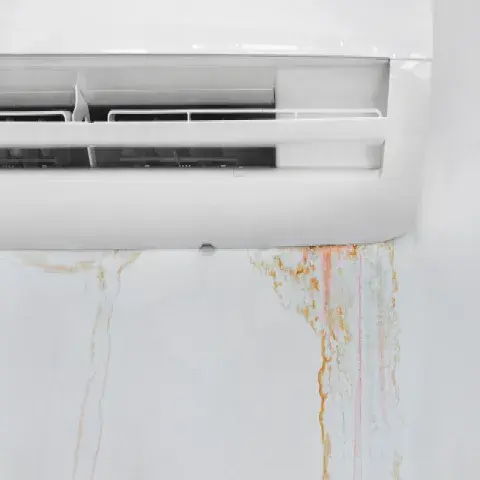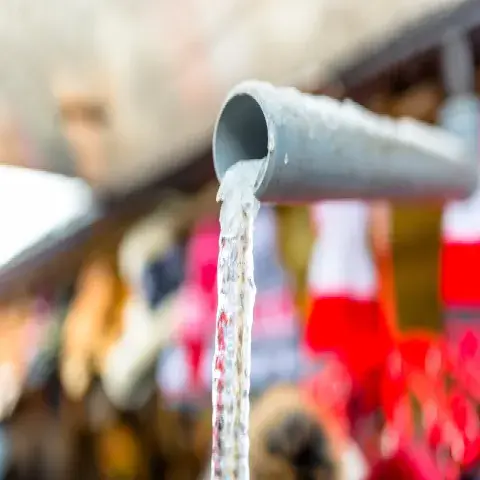As winter approaches, preparing your home for the colder months becomes a top priority. One crucial aspect of winterization is ensuring the safety and integrity of your roof. The harsh winter weather, with its snow, ice, and freezing temperatures, can pose significant challenges to your roof’s durability. Here are some top tips to help you winterize your roof and safeguard your home.
Inspect Your Roof for Damage
As winter approaches, it is advisable to perform a comprehensive examination of your roof to ensure its resilience against the harsh weather conditions. Check for any missing or damaged shingles, inspect the flashing for cracks, and be vigilant for early signs of leaks. Timely attention to these issues before the onset of winter can significantly mitigate the risk of more severe problems emerging during the colder months. By proactively addressing potential vulnerabilities, you can enhance the overall durability and protective capabilities of your roof, safeguarding your home from potential weather-related damage and ensuring a more comfortable living environment throughout the winter season.
Clear Gutters of Debris
Picture this – blocked gutters not only pave the way for menacing ice dams but also open the door to potential water damage that can infiltrate your cherished abode. To shield your roof and preserve the sanctity of your living space, embark on a mission to free your gutters from the clutches of leaves, debris, and any lurking obstructions. By ensuring a free-flowing pathway for water, you’re not just preventing ice dams; you’re fortifying your home against the winter onslaught. It’s not just about maintenance; it’s about empowering your home to stand resilient in the face of seasonal challenges. Get ready to elevate your winter home care game – starting with the clarity of your gutters.
Trim Overhanging Branches
Regularly trimming tree branches that extend over your roof is essential to prevent potential damage, especially during periods of heavy snow or ice. The weight of accumulated snow or ice can cause these branches to break, posing a risk of harm to your roof. By trimming the branches, you reduce the likelihood of structural stress on both the branches and your roof, minimizing the risk of damage. Additionally, this practice helps prevent water damage by avoiding potential entry points for water when branches break. It also ensures the proper functioning of gutters, allowing water to flow unobstructed and reducing the risk of issues such as leaks and mold growth, ultimately preserving the integrity of your home.
Remove Debris from the Roof Surface
Maintaining a clean and debris-free roof is crucial to safeguarding your home from potential water-related problems. Leaves, branches, and other debris can accumulate on your roof, creating a conducive environment for water pooling. To mitigate this risk, it is essential to establish a routine for removing any accumulated debris promptly. Regular maintenance not only enhances the aesthetic appeal of your property but also serves as a proactive measure against potential water damage. By staying vigilant and ensuring that your roof remains clear of obstructions, you can effectively safeguard your home and promote its longevity.
Top of Form
Check Attic Insulation
Ensuring proper insulation in your attic is a key factor in maintaining optimal conditions on your roof. Adequate insulation plays a crucial role in stabilizing temperatures, thereby preventing the formation of ice dams. By creating a barrier that retains warmth, insulation helps regulate the climate within the attic space, minimizing the risk of ice dams that can lead to potential roof damage. Investing in sufficient insulation not only enhances energy efficiency but also serves as a proactive measure in protecting your home during colder seasons.
Seal Attic Leaks
Sealing gaps or leaks in your attic is a crucial measure to prevent the escape of warm air, contributing to a more consistent temperature on the roof and mitigating the risk of ice dam formation. By addressing potential points of air leakage, you create a more efficient barrier against heat loss, maintaining a stable climate within the attic space. This proactive approach not only promotes energy efficiency but also serves as an effective strategy to safeguard your roof from the adverse effects of temperature variations, minimizing the likelihood of ice dams and their associated problems.
Install Ice and Water Shield
Installing an ice and water shield beneath your roofing material is a prudent step to fortify your home against potential water damage. This additional layer acts as a robust defense mechanism, offering heightened protection against water penetration. The ice and water shield serves as a barrier that prevents moisture from infiltrating the underlying structure, particularly in vulnerable areas where leaks might occur. By incorporating this protective measure, you create an extra line of defense, reinforcing the resilience of your roof and minimizing the risk of water-related issues, thereby contributing to the long-term durability and integrity of your home.
Inspect Flashing Around Penetrations
Frequent inspection of the flashing around chimneys, vents, and other roof penetrations is essential to preemptively address potential vulnerabilities and ensure robust protection against water infiltration. Flashing serves as a critical barrier in these areas, preventing water from seeping into the underlying structures. Regular checks enable homeowners to identify and promptly address any signs of wear, corrosion, or damage to the flashing. By maintaining the integrity of these protective elements, you enhance your roof’s resilience and reduce the likelihood of water-related issues, contributing to the overall longevity and functionality of your roofing system.
Monitor for Ice Dams
Vigilance for the formation of ice dams along the roof’s edge is crucial in averting potential water backup and associated damage. Monitoring the presence of ice dams and addressing them promptly is essential to prevent trapped water from seeping beneath the roofing material, potentially causing structural damage. Timely intervention, such as breaking up the ice dams or implementing preventative measures, can mitigate the risk of water infiltration and safeguard the integrity of the roof. By staying attentive to the formation of ice dams, homeowners can proactively protect their homes from the adverse effects of winter weather and ensure the longevity of their roofing systems.
Safely Remove Excess Snow
If there’s a significant snow accumulation on your roof, use a roof rake to safely remove excess snow. Avoid using sharp tools or excessive force, as this can damage your roofing material.
Prioritize Attic Insulation and Ventilation
When faced with a substantial snow accumulation on your roof, employing a roof rake to safely remove excess snow is advisable. This tool allows for a controlled and gentle removal process, minimizing the risk of damage to your roofing material. It’s important to exercise caution and avoid using sharp tools or applying excessive force, as these actions could compromise the integrity of the roof. By using a roof rake responsibly, homeowners can prevent potential structural stress, reduce the load on the roof, and mitigate the risk of issues such as ice dams or water damage associated with prolonged snow buildup. Regular and careful snow removal contributes to the overall well-being and longevity of your roofing system.
Schedule Professional Inspection
Prior to the onset of winter, it’s advisable to engage the services of a professional roofing contractor for a thorough inspection. These professionals possess the expertise to identify potential issues that might be exacerbated during winter conditions and can undertake any necessary repairs. By entrusting the inspection to skilled professionals, homeowners can enjoy an extra layer of assurance that their roofing system is well-prepared to withstand the challenges of the colder months. This proactive approach not only addresses existing concerns but also helps prevent the escalation of potential problems, ultimately contributing to the overall resilience and longevity of the roof.
Conclusion
As winter approaches, prioritize your home’s winterization by safeguarding your roof. Conduct a thorough inspection, clear gutters, trim overhanging branches, and remove debris from the roof surface to prevent water-related issues. Verify and enhance attic insulation, seal leaks, and consider installing an ice and water shield for added protection. Monitor flashing, address ice dams promptly, and safely remove excess snow with a roof rake. Prioritize professional inspection before winter to identify and address potential issues. These proactive measures not only winterize your roof but also fortify your home against the challenges of the season, ensuring



